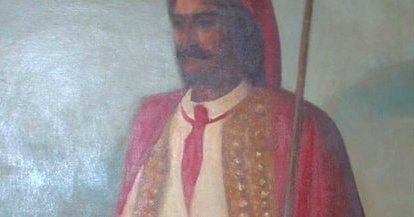Originated in Croatia
The history of the tie began with the Thirty Years’ War that ravaged Europe between 1618 and 1648. France, faithful to the protestant camp in its mission to counter the House of Habsburg of the Holy Roman Empire, needed elite troops to tip the scales in a destructive conflict that mobilised some twenty belligerents and which led to some six million deaths. Whilst Croatia was fighting on the Habsburgs’ side, in 1635 France called on Croatian mercenaries who had a strong reputation as the elite warriors of Europe.
At the time, the French king was Louis XIII. In the aftermath of multiple battles where they had displayed their bravery, the most heroic of the mercenaries were introduced to the king to be honoured. It was then that the king, ever keen to stay on top of the most recent fashion trends, was intrigued by the pieces of cloth tied around the necks of these warriors, finding them to be of the utmost elegance. This is how the tie was introduced to the French royal court.
But why was this piece of cloth called tie (in French, “cravate”)? It’s hard to ignore the fact that French speakers have a hard time pronouncing the letter “h”. However, it is a very common sound in the Croatian language, for example present in the name of the country. Indeed, Croatia is called “Hrvatska” in Croatian, while the word for “Croatian” is “Hrvat”. Incapable of correctly pronouncing the word “Hrvat”, the gentlemen of the court resorted to saying “Krvat”, which then led to the term “cravate”.
Today, the tie has become an essential symbol of Croatian culture. After tying the world’s biggest tie (808 metres long and 25 metres wide) around the Roman arena in the city of Pula in 2003, in 2008 Croatians introduced a national tie day. It is celebrated every year on the 18th of October.
A French adjustment
The tie survived nearly four centuries until developing into its current form. It owes a lot to France which played an essential role in its development. Having become fashionable during Louis XIII’s reign, the tie was taken up under Louis XIV’s reign, and never left the high courts of politics, diplomacy and French military. Likewise, the form of the tie, which was originally a scarf tied around the neck like a headscarf, underwent innovation in 1692 when French soldiers, facing a surprise attack from an English squadron at Steenkerque, had to tie their scarves quickly. They folded the cloth into a narrow strip in a simple knot whose ends were left loose. After being worn as a sign of political affiliation during the French Revolution, depending on the choice of colour, the tie continued its existence into the 19th century under the influence of dandy culture. Honoré de Balzac, the French novelist and playwright, hence wrote that the tie was “still an essential and mandatory piece of clothing which, in its varied forms, helps you learn about the person wearing it”. At that point, the tie took a form similar to that which is so familiar to us. The final version was conceived by the American Jesse Langsdorf in 1924.
Symbol of Franco-Croatian friendship
After the battle of Rocroi in 1643, the Croatian mercenaries joined the new cavalry regiment, “Royal-Cravate”, bearing the Latin motto “Nuc pluribus impar”, which can be translated as “Unlike anything else”. Active under Louis XIV and Louis XV, the regiment was renamed as the 10th cavalry regiment under the Revolution, during which it participated in the battles of Valmy and Fleurus.
Under Napoleon, the regiment became the 10th armoured regiment. It took part in the battles of Austerlitz, Jena, Eylau and Wagram, as well as the Russian campaign. The armoured regiment was then joined by Croatian regiments recruited in the Illyrian provinces, territories corresponding with present-day Croatia conquered by the French Empire in 1806. The exploits of the Croatian regiments are immortalised by a commemorative plaque in the cour d’honneur (court of honour) at Les Invalides in Paris.
In 1815, the 10th armoured regiment was refolded into the new 1st regiment which participated in the Battle of Ypres in 1914, before being integrated into Charles de Gaulle’s 4th Armoured Division in 1940. The 10th regiment is today a reserve regiment.


Follow the comments: |
|
